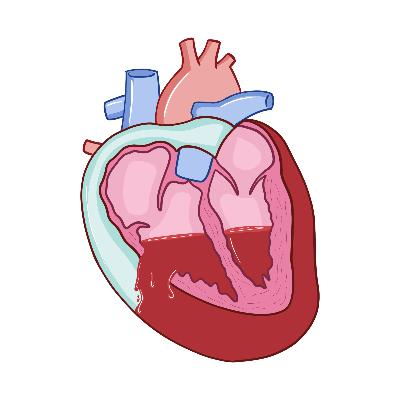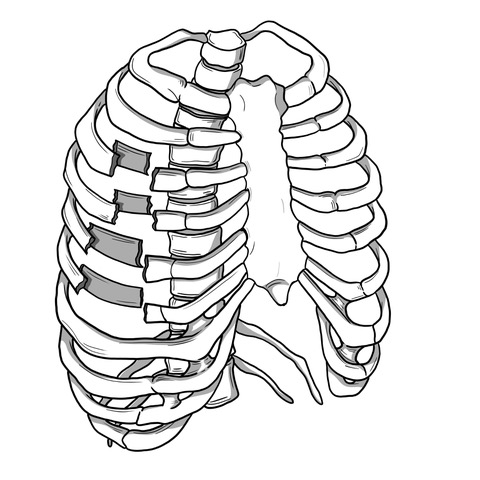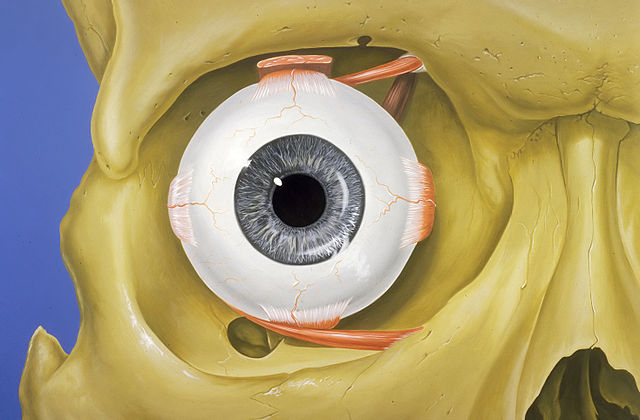Discover Surgery 101
Surgery 101

Surgery 101
Author: Surgery 101 Team
Subscribed: 7,439Played: 90,403Subscribe
Share
© Creative Commons
Description
Welcome to Surgery 101, a series of podcasts produced with the help of the University of Alberta in Edmonton, Canada. The podcasts are intended to serve as brief introductions or reviews of surgical topics for medical students. We've aimed to cover a single topic in between 10-20 minutes so that you can quickly get a good idea of the basic concepts involved. Every episode is divided into chapters and concludes with several key points to summarize the topic. We are always keen to receive your feedback on our podcasts, and we are accepting suggestions for additional topics. New episodes are published every Friday.
'Surgery 101' was created by Dr Parveen Boora and Dr Jonathan White, and is supported by the Department of Surgery at the University of Alberta. Our 2010 series of podcasts are brought to you by the Undergrad Surgery Mobile Podcasting Studio Team which is: Jonathan, Jenni and Tracy, with the assistance of the Surgery 101 Experts of Edmonton.
Note to experts: please note that these podcasts are only intended as brief introductions for medical students - we cannot delve into the more complex nuances of advanced surgery in a 10-minute podcast. We encourage all listeners to supplement their learning by seeing patients, assisting at surgeries and reading widely!
'Surgery 101' was created by Dr Parveen Boora and Dr Jonathan White, and is supported by the Department of Surgery at the University of Alberta. Our 2010 series of podcasts are brought to you by the Undergrad Surgery Mobile Podcasting Studio Team which is: Jonathan, Jenni and Tracy, with the assistance of the Surgery 101 Experts of Edmonton.
Note to experts: please note that these podcasts are only intended as brief introductions for medical students - we cannot delve into the more complex nuances of advanced surgery in a 10-minute podcast. We encourage all listeners to supplement their learning by seeing patients, assisting at surgeries and reading widely!
543 Episodes
Reverse
After listening to his podcast, learners will be able to: ● List four wound prep principles and five patient related factors for caring for patients with chronic wounds ● Describe the important features of the medical history related to venous ulcers ● Recognize the important physical exam signs associated with venous ulcers ● Outline a treatment plan for a patient with a chronic venous ulcer
Today, we will go over what cardiac tamponade is, how it results, and most importantly, how we diagnose and treat it. After listening to this podcast, you will be able to: 1. Define cardiac tamponade and explain its pathophysiology. 2. Describe the boundaries of the cardiac box and list the elements of Beck's triad. 3. Identify the key clinical features of cardiac tamponade and explain how to make the diagnosis. 4. Discuss the management of cardiac tamponade, including emergent interventions and definitive treatment strategies.
Today, we will learn how to diagnose and treat patients who have sustained rib fractures, as well as gain some practical knowledge on how to identify if a patient's problem is more urgent than simple rib fractures. After listening to this podcast, you will be able to: 1. Describe the anatomy of the ribcage and outline the mechanism of simple rib fracture in blunt force trauma. 2. Explain the mechanism of injury in rib fracture with pneumothorax, hemothorax and flail chest. 3. Outline the important elements of the history and physical examination in patients with rib fractures. 4. Outline the management of patients with rib fractures. 5. Outline the indications for surgical fixation of rib fractures.
In this episode, we will be focusing on the Whipple procedure itself and will not be covering pancreatic cancer patient presentation or investigations. Dr. David Shapiro's previous podcast on pancreatic cancer is a great resource for that information. Today we will talk about the procedure and look at a patient case. By the end of this podcast, listeners will be able to: • explain the surgical anatomy of the pancreas • describe the essential elements of the Whipple procedure • outline indications for a Whipple procedure
This episode was created by Katie Du, with content expertise provided by Dr. Trevor Schuler. By the end of today's episode, the learner will be able to: 1. Identify renal colic and differential diagnosis 2. Determine appropriate investigations when suspecting nephrolithiasis 3. Evaluate the need for stone treatment and referral to urology 4. Suggest appropriate stone prevention strategies
It goes without saying that surgeries come with a significant stress on the body, it is therefore imperative that patients, particularly those with significant co morbidities are medically optimized prior to surgery. Today we're going to consider how to properly prepare patients for surgery, looking specifically at the medications that patients are taking. After listening to this episode, you should be able to: 1. Explain the two main reasons why we need to know about medications that people are taking before they have surgery. 2. List classes of medications that should be: a. continued during the pre-operative period b. adjusted prior to surgery c. stopped prior to surgery
After listening to this podcast, you will be able to: • describe the innervation of the female reproductive system, • identify that pain is often perceived by patients undergoing office gynecological procedures, • outline factors associated with increased pain perception during office gynecologic procedures, • describe evidence-based techniques to reduce pain during gynecologic procedures, including pelvic exams, IUD placement, and endometrial biopsy.
In this episdoe we will explore Thyroid Eye Disease. You may also hear this topic referred to as thyroid orbitopathy or Graves' orbitopathy, but today we will use the overarching umbrella term of Thyroid Eye Disease. After listening to this podcast, learners will be able to: 1. Explain the anatomy and pathophysiology behind thyroid eye disease 2. Recognize signs and symptoms of thyroid eye disease 3. List treatment options for thyroid eye disease, including surgical options
This episode will cover practical tips for recognizing and managing eye trauma. We will look at foreign bodies and globe rupture. Today's learning objectives: 1. Intraocular foreign body: take an effective history and select appropriate imaging depending on the type of foreign body. 2. Globe rupture: recognize that this also an ophthalmic emergency, and recognize signs that may indicate an open globe.
In this episode of Surgery 101 where we will cover practical tips for recognizing and managing eye trauma. This week's episode will cover lacerations and compartment syndrome. For today, our objectives are: 1. Eyelid lacerations: recognize if these involve the eyelid margin or the canalicular system, and recognize why medial lid lacerations are often the most concerning. 2. Orbital compartment syndrome: recognize signs of this ophthalmic emergency and explain why a lateral canthotomy and cantholysis is the urgent procedure of choice.
In this final episode, medical student Sunpreet Cheema and Dr. White reflect upon the surgical innovations and innovators discussed in this ten-part series.
This episode features and interview with Dr. Carol Duncan who discusses her great grandfather's connection to surgical innovation. Dr. Simon Powell Sebastian was a renowned physician, surgeon, and the co-founder of two historic African-American hospitals in Greensboro, North Carolina.
Today, Sunpreet Cheema and Surgery 101 will explore the fascinating histories of the inventors behind three indispensable surgical suction devices: the Yankauer, the Poole, and the Frazier.
Today, we explore the fascinating histories of the inventors behind two handheld surgical forceps: DeBakey and Adson.
During an operation, it's common to have to put a clamp on blood vessels in preparation for suturing. Today, Sunpreet Cheema will review a few of the most common clamps you'll encounter and look at the names behind the history: Kelly, Crile and Halstedt.
In this episode, Sunpreet Cheema will take a look at instruments used to hold tissue firmly, through the lens of two more surgical innovators: Emil Theodor Kocher and Oscar Huntington Allis.
Retracting tissues is an essential part of surgery. We need to be able to hold the wound open so you can see and operate on deeper structures. In this fourth episode of her ten part series, Sunpreet Cheema explores the fascinating histories of the inventors behind three indispensable surgical retractors: the Senn's, the Weitlaner and the Balfour.
Today, medical student Sunpreet Cheema continues her ten part series with episode three, which delves into the surgical history of the scalpel and cautery. This episode considers three surgical lives: Morgan Parker, Charles Russell Bard, and William T. Bovie.
Today, medical student Sunpreet Cheema explores the fascinating histories of surgical innovators who developed some of our most indispensable surgical instruments - scissors. Specifically, we'll be looking at the Mayo and Metzenbaum scissors.
In this introductory episode, Dr. White and Sunpreet Cheema discuss the the history of surgery through the lens of surgical instruments. Supreet Cheema provides an introduction to her ten part series by reviewing the Babcock foreceps.


























it was very interesting. thanks a lot 🌻
I'm an OT from IRAN! Thank you for the helpful tips💐
i just found out about this podcast...nice!
This episode has only information on tubal ligation, not stress incontinence and urethral sling.